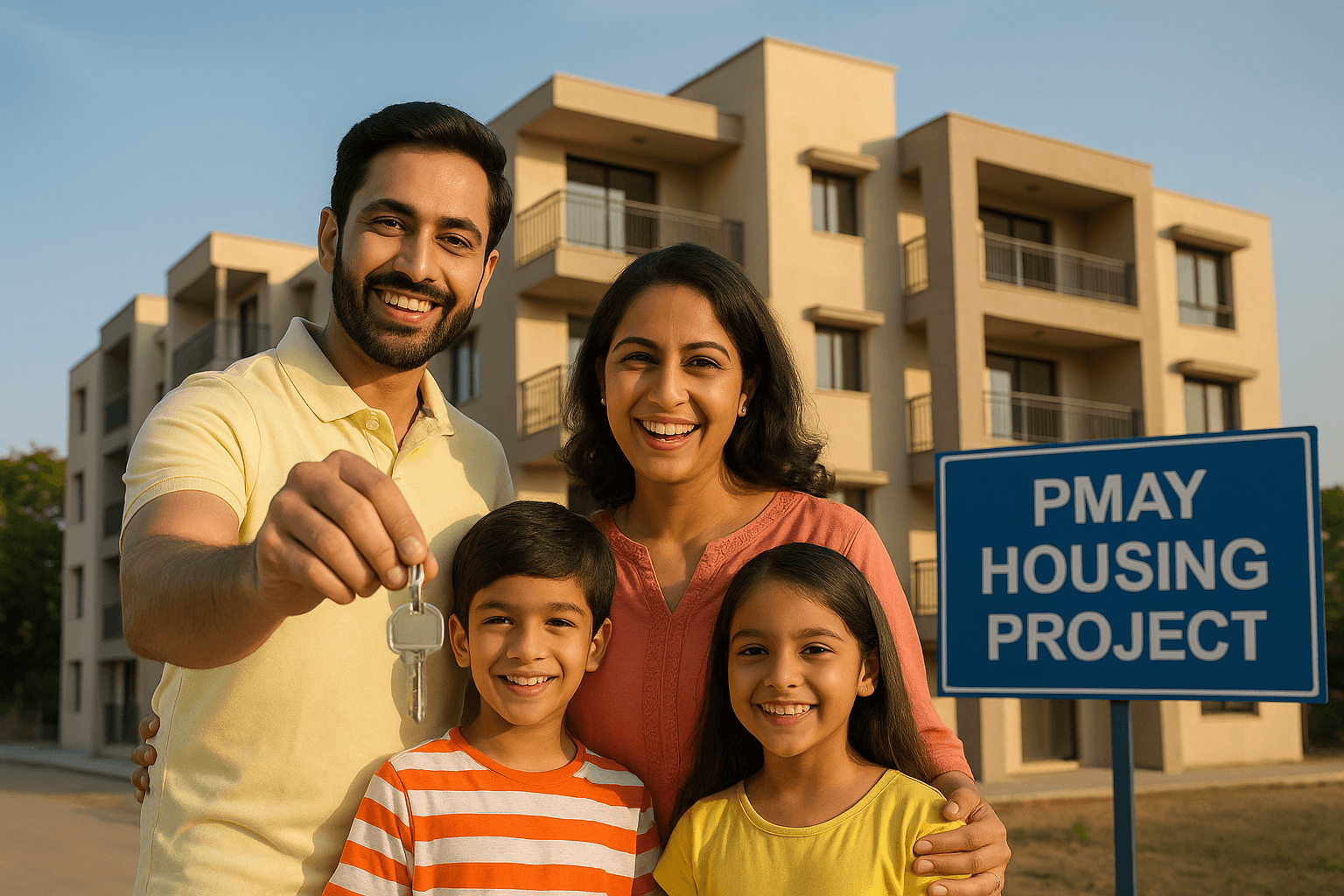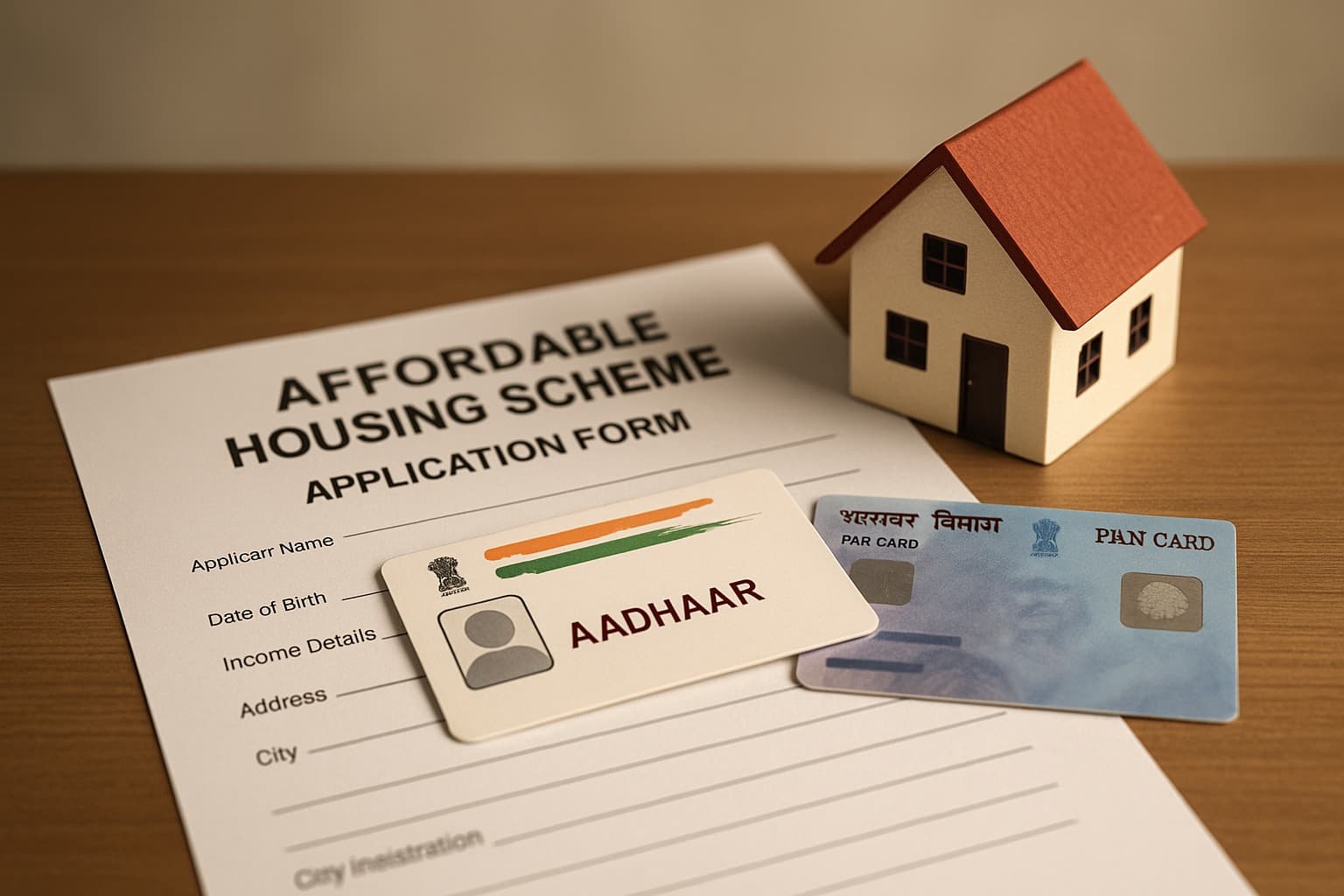Affordable Housing Schemes in India: A Comprehensive Guide
Summary
Explore affordable housing schemes in India like PMAY and state initiatives (MHADA, DDA, KHB) that make homeownership accessible. Learn about benefits, eligibility, and tips for first-time buyers in 2025.

Affordable Housing Schemes You Must Know
Owning a home is often considered one of the biggest milestones in life, yet for many Indians, this dream can feel like a distant reality. Rising property prices, particularly in metros, make owning a home a challenging proposition for middle-income families. However, government initiatives and supportive policies have changed the game. Affordable housing schemes across India are now providing opportunities for first-time buyers, working professionals, and low-to-middle-income families to purchase homes without financial strain.
With 2025 well underway, the landscape of affordable housing in India is stronger than ever. Multiple central and state-level programs offer subsidies, financial incentives, and modern homes at budget-friendly prices. These initiatives not only make homeownership possible but also encourage people to invest in real estate as a long-term asset.
Pradhan Mantri Awas Yojana (PMAY): The Game Changer
The Pradhan Mantri Awas Yojana (PMAY) is the flagship initiative driving affordable housing in India. Launched in 2015, PMAY aims to provide “Housing for All” by 2025. The scheme is divided into PMAY-Urban and PMAY-Rural, catering to urban migrants and rural households respectively.
For urban buyers, PMAY-Urban offers up to 6.5% interest subsidy on home loans, helping middle-income families manage EMIs more comfortably. Homes under this scheme are designed to be safe, durable, and functional, with a focus on first-time buyers. On the other hand, PMAY-Rural provides financial assistance between ₹1.2 lakh and ₹1.5 lakh for building basic homes for economically weaker sections, ensuring dignity and security in rural housing.
The scheme has already helped millions of families across India, and with 2025 approaching, the benefits are only set to grow. By lowering financial barriers, PMAY has transformed homeownership into an achievable goal rather than a distant dream.
State-Level Affordable Housing Schemes
Beyond central initiatives, many states run their own affordable housing programs, tailored to local real estate and demographic needs:
Maharashtra Housing and Area Development Authority (MHADA): MHADA continues to lead in budget housing, offering flats priced below ₹50 lakh in Mumbai, Pune, and other cities. These units are allocated through transparent lotteries, ensuring fairness and accessibility.

Delhi Development Authority (DDA): The DDA frequently launches affordable housing projects in Delhi and its suburbs. With emphasis on quality construction and strategic locations, these projects attract first-time buyers seeking budget-friendly yet livable homes.
Karnataka Housing Board (KHB): Focusing on Bangalore and tier-2 cities, KHB provides affordable flats with easy financing options and government-backed incentives, helping young professionals and families enter the property market.
These state-level programs complement central schemes like PMAY, creating a comprehensive framework that benefits buyers nationwide.
Benefits of Affordable Housing Schemes
The advantages of participating in affordable housing schemes go beyond just cost savings. Here are key benefits for homebuyers:
Financial Relief: Interest subsidies on loans reduce EMIs significantly, making it feasible for families to buy homes without financial strain.
Priority Access: Eligible applicants often receive preferential allocation, ensuring transparency and fairness.
Quality Construction: Modern affordable homes adhere to strict safety and durability norms, providing secure living spaces.
Integrated Amenities: Many projects now feature community halls, green spaces, and retail outlets, creating livable neighborhoods.
Long-Term Investment: Budget homes in prime or emerging areas often appreciate over time, offering financial stability alongside a roof over one’s head.
Private Developers Joining the Affordable Housing Push
Developers are increasingly embracing affordable housing projects, spurred by incentives under RERA and government policies. These projects are no longer just basic apartments—they feature modern designs, sustainable construction, and convenient amenities.
The focus has shifted toward tier-2 and tier-3 cities, where land prices are lower and demand for quality yet affordable housing is rising. Cities such as Pune, Jaipur, Kochi, and Lucknow are emerging as hubs for budget-friendly projects, providing homes for working professionals and growing families. By partnering with government initiatives, developers are helping scale the availability of affordable housing while maintaining profitability.
Tips for First-Time Homebuyers

Navigating affordable housing schemes can seem overwhelming. Here are practical tips to make the process smoother:
Check Eligibility: Ensure you meet income, family size, and first-time buyer criteria before applying.
Use Official Portals: Websites like PMAY Urban/Rural and respective state housing authority portals provide accurate and up-to-date information.
Verify RERA Registration: Always confirm that the project is registered under RERA to safeguard against delays or fraudulent practices.
Plan EMIs: Even with subsidies, calculate monthly repayment capacity to avoid financial stress.
Explore Developer Offers: Some developers provide promotions like zero booking charges, home loan tie-ups, or early possession benefits.
The Future of Affordable Housing
India’s affordable housing market is on an upward trajectory. By 2025, government schemes are expected to cover more households, integrating technology, green construction, and urban planning. Digital application processes, faster loan approvals, and centralized tracking of beneficiaries have made accessing affordable homes easier and more transparent.
In parallel, infrastructural improvements—like new metro lines, better road connectivity, and suburban growth—are increasing the attractiveness of budget housing in urban outskirts. Families can now invest in homes that are affordable, well-connected, and equipped with modern amenities, without compromising on lifestyle.
Conclusion
Affordable housing schemes are changing the real estate narrative in India. From PMAY’s nationwide reach to state-level initiatives by MHADA, DDA, and KHB, these programs are bridging the gap between aspiration and reality. Buyers benefit from financial relief, transparent allocation, modern construction, and long-term investment opportunities. Developers and government bodies are working together to expand affordable housing across metros, suburban areas, and tier-2 cities, creating homes that are accessible, secure, and livable. For middle-income families and first-time buyers, 2025 presents a golden opportunity to step onto the property ladder.
